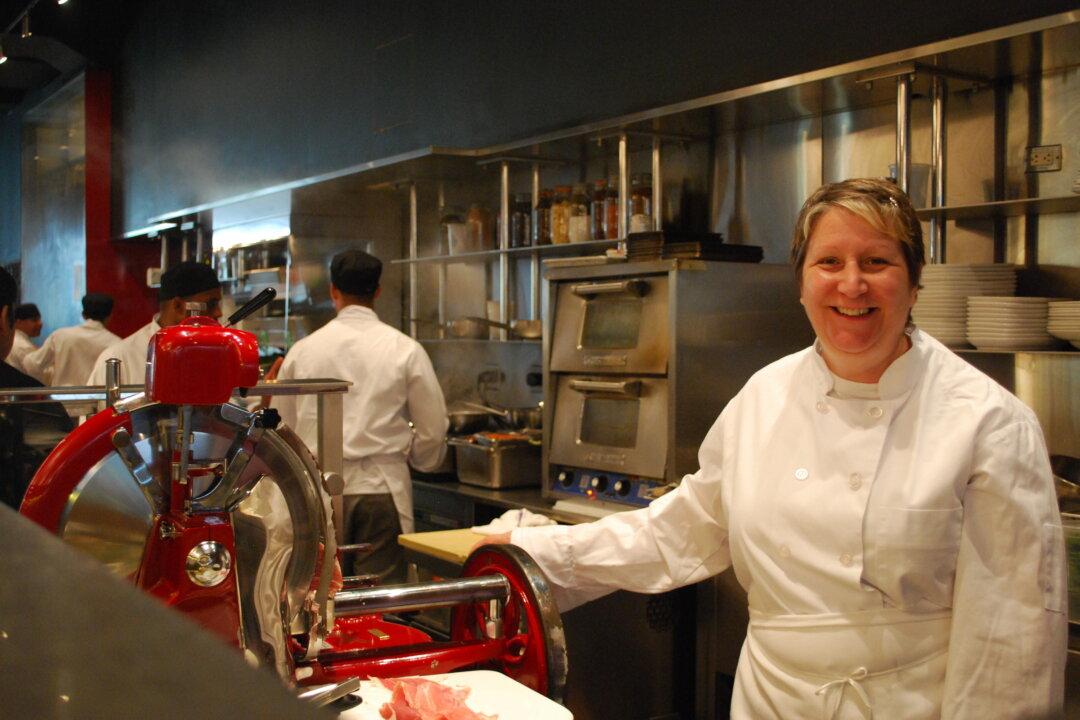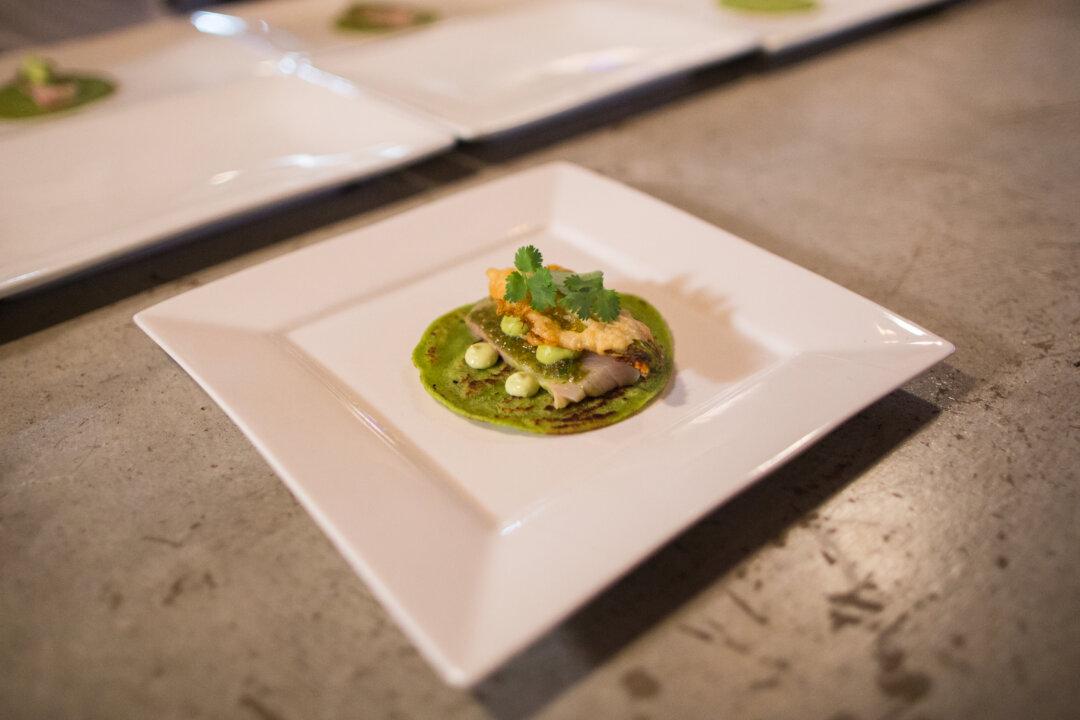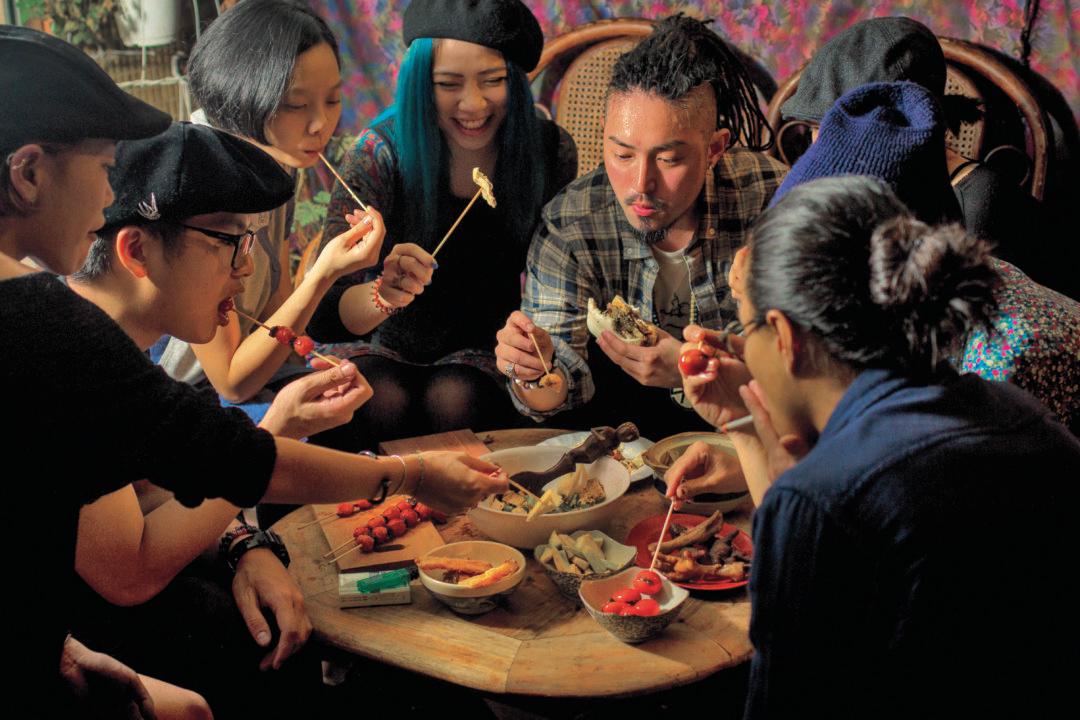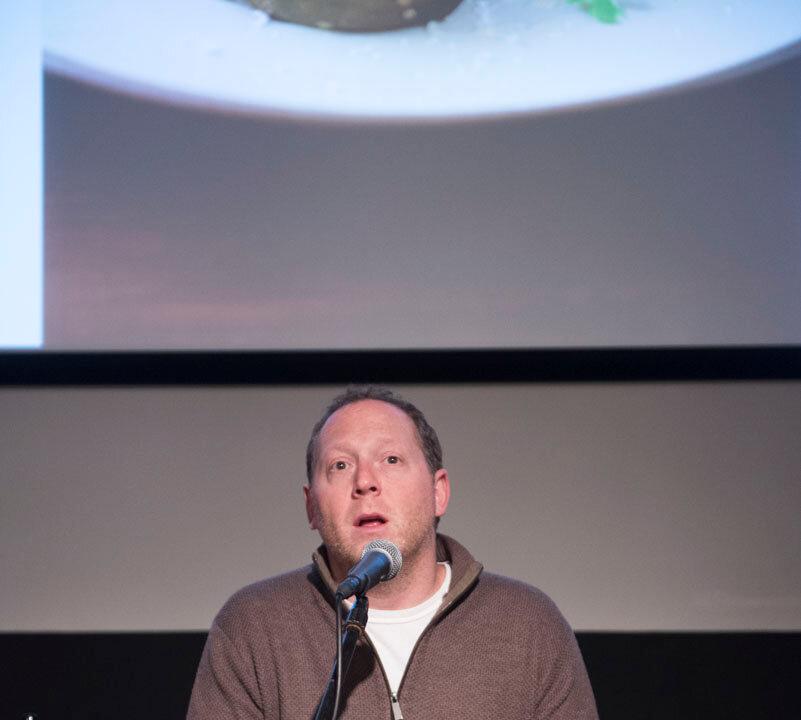NEW YORK—Feeding up to 2,500 art aficionados who visit MoMA every day requires a different set of logistics and know-how than an ordinary restaurant—something that Chef Lynn Bound pulls off with aplomb.
Wafting scents of garlic that might tickle the noses of visitors, or anything fried, where oil could damage the artwork, are off the menu.
And then there are the vegetarians and vegans; those who expect a burger for lunch (and won’t find it); people with dairy or gluten allergies to consider; and children with their often-picky palates.
But it’s all in a day’s work for chef Lynn Bound, who oversees Terrace 5, Cafe 2, a bar, and the staff cafe at the Museum of Modern Art (MoMA). Terrace 5, perched up high on the fifth floor, offers a great view of the sculpture garden, with a seasonal outdoor terrace; Cafe 2 is on the second floor.
There is a central kitchen just below ground that sends prepped ingredients, discreetly stashed in a custom-made cart, up to the restaurants—five floors up in the public elevator to Terrace 5 and two floors up for Cafe 2. Getting there and back, through the halls of the MoMA, involves navigating a veritable labyrinth.
There is an upside to the restrictions on the kind of food that can be served: it’s healthier.
At Terrace 5, which can’t serve hot food, Bound goes for food that can be presented naturally. “We like to do a lot with grains and make healthy salads,” she said. Add to that, proteins that aren’t expected to be hot, for example, a grilled salmon salad, or a chicken curry salad.
Cafe 2, which serves fresh, seasonal Italian fare, has more cooking apparatuses, and hot dishes are OK, though there is no fryer. The offerings run the gamut from antipasti, pastas, gorgeous plates of vegetables, to children’s menus.
As befits food at an art museum, the presentation at all the cafes is beautiful to behold, and varied in its array of colors, shapes, and textures.
Seasonal Menu
Bound works with the seasons and changes the menus about four times year. She also uses foods that have a shorter season (ramps and cherries, for example).
“I think of the season and the people, what would they want if they’re just coming in from a cold day? I want the food to feel warm and comfortable in the fall and winter, and I think of who’s eating it.”
And then there are the special projects, where Bound collaborates with artists and museum curators on food-related events for exhibits, such as Alison Knowles’s performance piece “Identical Lunch,” where for two weeks, people signed up to eat a tuna sandwich and buttermilk with the artist.
Early Influences
Bound grew up with two siblings and their single mother in Chambersburg, N.J., which was something of a Little Italy in those days, with a bakery, and a butcher you could walk to. Her mother was from the Abruzzi region in Italy, and they would receive packages from family filled with olive oil, prosciutto, and different cheeses. Bound’s mother was a fabulous cook, picking up tips from the restaurant she waitressed at.
Bound started work in the same restaurant at the age of 12 in the coat checkroom.
Several years later, she found solace in a kitchen of a friend’s cafe after her mother passed away from cancer.
“I dropped out from college. It was very hard for me to lose her, so I started working in the kitchen as a way of kind of saying, well I know how to do this, let me do this. It helped me get through it. It came naturally to me. It was very good to use your mind and your hands.”
And it was good to be interacting with guests, and with staff in the kitchen. “It felt like a family at a time when I didn’t really have one.”
She was trying to figure out her future and a friend suggested culinary school. It resonated. For a year and a half Bound worked three jobs to save money to attend the Culinary Institute of America. “It was a work ethic that was instilled at an early age, which I’m very grateful for.”
Learning Leadership
To run MoMA’s kitchens, immeasurable organization and leadership skills are required and Bound’s experience is well-rounded.
She started with work at hotels, including a 12-year stint at the Marriott; catering, at Great Performances; and restaurants, including Jean-Georges Vongerichten’s Lipstick Cafe.
While working in hotels Bound took part in leadership training programs.
“At the time, as a cook you think, ‘why do I need to know that?’ But later in life as you’re leading people and you’re in charge it’s super important,” she said.
Bound said three things are at the center of her leadership: “identification with your employees, clear direction, and appreciation.”
“Leadership doesn’t work when you’re looking down at the kingdom and telling them what they did wrong,” she said. “You have to understand what their challenges are. It’s easy to tell somebody, ‘if you don’t like it, leave.’ That’s easy. It’s hard to have a dialogue and find common ground.”
Mentoring and training is now something that Bound puts a lot of time and effort into.
It’s rewarding and makes sense for the business, she said. But it also seems to go back to a sense of gratefulness for she received from others during her career.
“Obviously I wasn’t born knowing what I know. I learned it through relationships and people and the kindness of others who said ‘Let me help you, let me show you,’” she said. “If you know something in life, whatever your talent is, you should want to share it. It’s the right thing to do. So I love doing that, training [staff], teaching them, getting them ready for whatever their next step might be in life.”
Outside of MoMA, Bound can be found with her three cocker spaniels—Charlie, Bradley, and Lucy, who also join her for events like the dog walk for cancer. “They’re very famous in the neighborhood,” she said.
Her community work supports cancer groups. Next week, Bound is involved in a benefit for people with breast or ovarian cancer. The Sept. 23 event, for SHARE, brings together many of New York City’s top women chefs, pairing them with celebrity sous-chefs.





